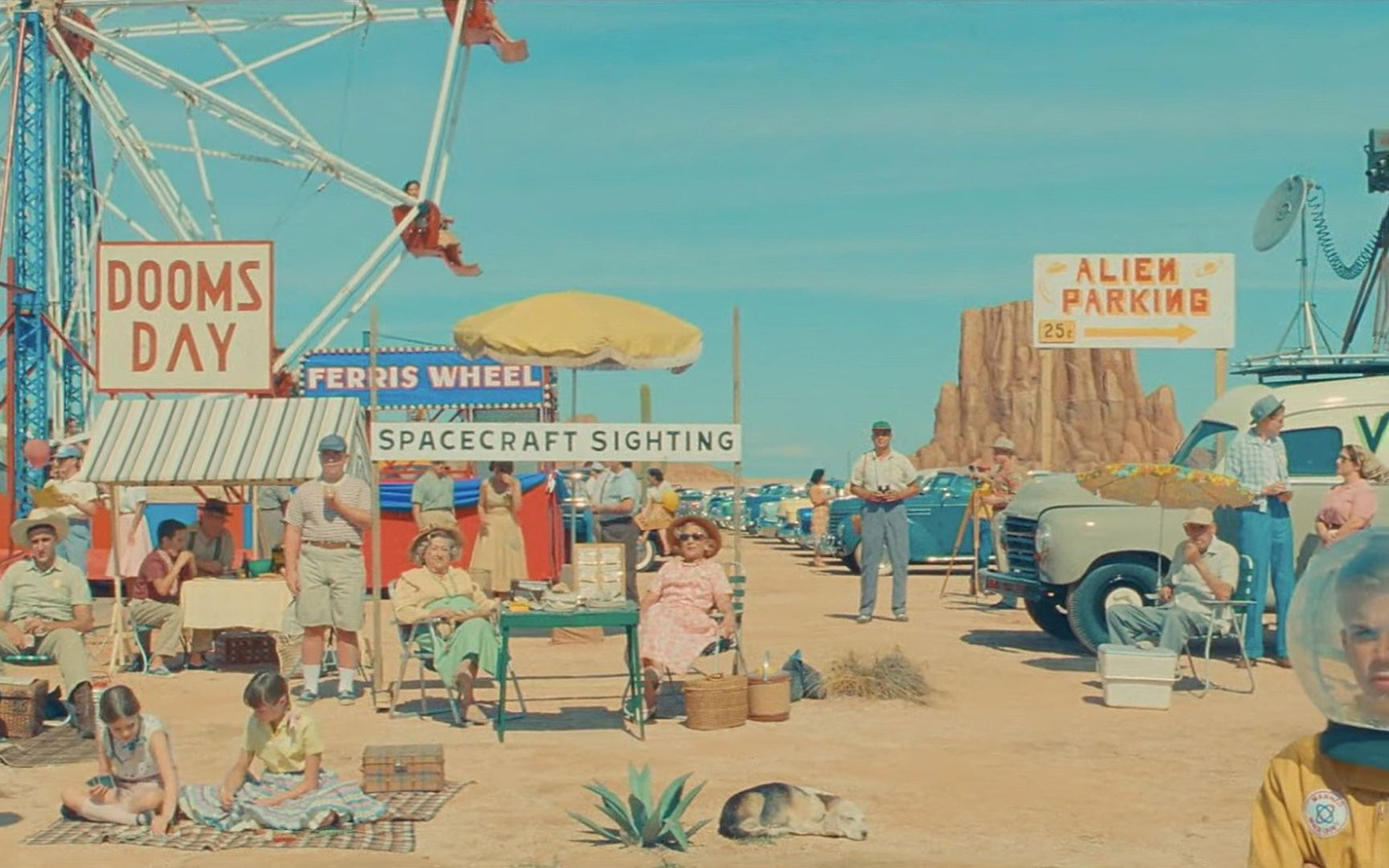Asteroid City, the new film from auteur Wes Anderson, is set in a post-WWII America that doesn’t know where it’s going but is nonetheless confident it will get there.
The fictional desert town the film is named for is brimming with a ramshackle optimism in the face of a rapidly developing world. If your car breaks down, Hank, the town’s mechanic (Matt Dillon), is pretty sure the problem is one of two things he’s seen before; if your motel cottage burns down, the plucky motel manager (Steve Carell) will pitch you a tent; the mismeasured yet fully-built freeway ramp is closed indefinitely; you can purchase plots of land for future development out of a vending machine.
The town is filled with characters who are attending a youth astronomy conference, an ensemble cast that includes a recently widowed war photographer (Jason Schwartzman), his disapproving, WASP-y father-in-law (Tom Hanks), a movie star (Scarlett Johansson), an army general (Jeffrey Wright), and a wonderstruck scientist (Tilda Swinton), as well as many others. I say characters and cast here because the events in Asteroid City (the setting) are actually part of a play that is being shown in a television program that is another part of Asteroid City (the film). Throughout the film, the audience is pulled out of the action of the main story and given behind-the-scenes looks at the production of the fictional play from a stately host played by Bryan Cranston.
This type of nested-story framing device is common in Anderson’s screenplays, one of many creative choices that make up his idiosyncratic and often-parodied style. A parody of a Wes Anderson movie misses the fact that his movies are more than just symmetrical shots with center-framed actors, dead-panned deliveries, and quirkiness for its own sake. Style is not synonymous with substance, but it is not its opposite either. The best Wes Anderson films use their visual precision and storybook mise-en-scène (the stage design and arrangement of actors in scenes for a theater or film production) to create a world that feels real unto itself, thereby amplifying the story and themes they contain.
Asteroid City is among Anderson’s best work and is the most direct display of how his style services the stories he’s telling. Its concurrent narratives—one the story, the other the storytellers—are each entertaining in their own right and ultimately become co-dependent anchors for the film's big tent themes of grief, love, connection, and purpose. The Cold War setting and brief sci-fi leanings of the play are perfect for the American confidence in spite of the unknown shown in the film. There’s a crudeness in this confidence and in the depiction of the making of the play itself, which only makes the characters’ persistence and Anderson’s fastidiousness more inspiring. Far more than Andersonian window-dressing, the television program eventually takes precedent and lands crucial moments that get at why we tell stories at all.
Asteroid City is not sure we’re going, but has faith that getting there will require that we keep telling our stories in all the lavish style and meticulous craft that they deserve. (Focus Features. Rated PG-13 for brief nudity, smoking and some suggestive material. Now in theaters.)
About the Author
Jordan Petersen Kamp graduated from Calvin University in 2017. He now works as an auditor and writes freelance as often as he can. He attends Sherman St Church in Grand Rapids, Mich.

